Review: HTC Desire Eye for AT&T
Media
The Desire Eye includes the basic Google Play apps, including Music, Movies & TV, Books, Newsstand, and Games. You can use the Play Store to purchase or rent content and then consume it in the corresponding app. Google has updated all these apps recently. Not only do they have new features, but they have refreshed designs as well.
HTC included its great MP3 app, which is your best bet for playing sideloaded music. The Desire Eye also has an FM radio so you can snag local broadcasts if that's how you roll (headphones required.)
AT&T stuffed the AT&T Mobile TV app on board, which you can use to stream video snippets across the network. This works best when LTE is available. The Eye also has Beats Music preinstalled. Both require monthly service fees.
Just for kicks, I tested the Desire Eye's BoomSound speakers side-by-side with the M8. The M8's sound better, but only by a little bit. The Eye's BoomSound speakers don't offer quite as much bass, but they are rather loud if you crank up the juice.
If you're looking to share content from the Desire Eye to other devices, you can use traditional DLNA or HTC's Media Share app. These both worked well. Many of Google's own apps support casting to its Chromecast TV dongle or Nexus Player. Casting is the easiest of these three to use, but you have to have one of Google's players to use it.
Camera
The Desire Eye's seminal feature(s) are the cameras. Both can capture 13-megapixel images. A long press of the camera button will launch the camera even when the phone is locked. You can pick which of the two cameras - front or back - the Eye opens first. All the better for you vain folk.
The camera's user interface is mostly carried over from the M8 and E8. Most of the screen is used as a viewfinder and controls are kept to a minimum. Along the edge of the viewfinder you'll see a thumbnail of your most recent shot, the shutter button, and a switcher tool that lets you jump between the basic shooting modes. On the left, you'll see a tool for adjusting the flash, as well as access to the full set of tools.
The shooting modes now include selfie, split capture, and photo booth, in addition to the existing standard and 360-degree panorama modes.
The Selfie mode includes HTC's "makeup" feature, which will give you a virtual facelift in real-time. You drag a little slider up and down to adjust the strength of the effect. It basically smooths out your skin a bit. Otherwise, Selfie mode includes all the camera's other features, including the flash.
Split Capture uses the front and rear cameras at the same time, so you can sort of add yourself to the action. It literally splits the viewfinder in half, with you on one side and your subject (oh, who are we kidding you are ALWAYS the subject!) on the other. Frankly, I like Samsung and Sony's version of this feature better. Samsung's lets you place yourself anywhere on the main image with all sorts of effects. HTC's Split Capture mode is a static split screen.
Then there's Photo Booth. Much like a real photo booth, this tool lets you take four quick shots that are then pieced together in a 2x2 grid or 1x4 strip. Once you start the capture, the Eye automatically counts down from three for each shot in quick succession and then puts them all together. (I can see the duckfaces now…) It's intuitive and works well.
The full set of tools for adjusting the camera is quite extensive. Press the three little dots in the corner of the viewfinder and a control strip pops out across the bottom. There are controls that let you adjust ISO, exposure, and white balance on the fly, as well as apply one of 19 different pre-set filters (normal, sepia, grayscale, warm, cool, etc.). The tools offer access to a handful of scenes, which include night, HDR, simple panorama, electronic image stabilization, full manual control, portrait, landscape, backlight, text capture, and macro. The scenes should be easier to reach, especially HDR, which is among the most useful of the tools. Users can also create and save their own presets as a separate “camera” in the mode selector.
The camera is lightning quick. It's easy enough that anyone can master the basics. At the same time, it offers a robust set of options for really flexing those creative muscles.
Wondering about Zoe? When HTC announced the Desire Eye in October, it also relaunched Zoe as a cross-platform social network. The new Zoe app combines the Zoe Highlight Video functionality with a social network much like Instagram or Vine. It can make videos as short as seven seconds (and up to 30 seconds) and combine one or more photos and/or videos. It includes a tool to find Facebook friends who are also using Zoe, and can post Zoes to Instagram, Facebook, and Twitter. The app automatically mixes content into a creative video montage, with various options to customize music and timing. It's not just part of the Desire Eye; it's available to other Android phones (and soon, iPhones as well.)
The app is meant to use photos, video fragments, and audio snippets to tell a small story. To that end, it works. I find it much easier to use now that it has been pulled out of the main camera app, but it's also a rather lonely place unless you're lucky enough to have other friends who use it. Perhaps the best feature is that Zoes are now shareable with social networks that other people actually use.
Photos
I think both the front and back cameras take great shots. Focus was razor sharp, exposure spot on, and white balance generally accurate. It's truly enjoyable that you can snap excellent images without doing any work to tweak the settings. The dual-LED flash truly helps capture images in low light that would otherwise be impossible to get. The flash does go overboard sometimes, though.
I wouldn't rate the main camera higher than those of the iPhone 6 or LG G3, but it does out-class the Moto X (2nd Gen).
Bottom line: people who like to put themselves in every shot are really going to like what they see.
Video
The Eye can capture 1080p HD video from both cameras, and the results are nearly always excellent. I was pleased with the clarity of video I shot, and can't offer any criticisms about exposure and white balance. Again, I thought the results were indiscernible between the front and rear cameras. I must say, it's nice to have consistently awesome results from the user-facing camera, as so often the user-facing camera offers sub-par quality at best. That's not the case here. HTC did a good job.
Gallery
The Desire Eye uses HTC's gallery app. The app organizes photos by timeline (segregated by date), by album (grouped by event), or location (grouped by geo-tagged data). These three main albums are arranged in vertical columns and you swipe side-to-side to switch between them. I find it to be a useful way to interact with your photos.
As far as editing goes, the app offers: crop, rotate, add frames, flip, draw on, and straighten. It has an entire array of filters to help give your images that artistic touch. Sharing options for images run the norm. It's easy to push photos to your friends via email or social networks. Photos can also be moved, renamed, and otherwise managed.
Apps
Oy, there's a wee bit of bloatware. AT&T crammed 15 of its own apps on board, including useless gems such as AT&T Live and AT&T Ready2Go. In addition to the AT&T-branded junk, you'll find stuff like Famigo, KeyVPN, Lookout, Scribble, Softcard, Uber, and, yes, the Yellow Pages. You can't delete a lot of these, but you can at least hide them.
Bluetooth
The Eye's Bluetooth radio gave me no trouble. I was able to pair it with my PC as well as Bluetooth headsets and speakers. As far as calls go, quality through my headset was excellent. I was pleased with volume and clarity. The Desire Eye supports the aptX Bluetooth profile, which offers the highest-possible-quality stereo music playback. I paired it with my favorite Bluetooth speaker and was happy to blast some great-sounding tunes.
Browser
The Desire Eye comes with both the generic old Android browser and Chrome. Both do a fine job of rendering web sites, though Chrome offers a few more personalization and sync tools. I was pleased with browsing speeds on AT&T's LTE network and didn't run into any trouble.
Clock
Like all devices running HTC Sense, the Desire Eye has a useful clock tool. As longas you are holding the phone, double-tap the screen to turn on the display, which shows the lock screen and clock. You can set the clock to just show the time, or to also include weather. As is often the case, the lock screen clock uses white, digital numbers and cannot be customized.
GPS
The Desire Eye has Google Maps for planning and routing directions. Google Maps performed really well on the Desire Eye, thanks in part to its speedy processor. The Desire Eye was able to pinpoint me consistently within several seconds no matter where I was or what sort of signal strength was available. Google Maps remains the premiere free mobile mapping software available, and it can help you find walking, biking, driving, and public transit routes between points, as well as street-level views of where you're going.
AT&T added its own Navigator app as an alternate to Google Maps. AT&T Navigator works well, but carries a small monthly fee.


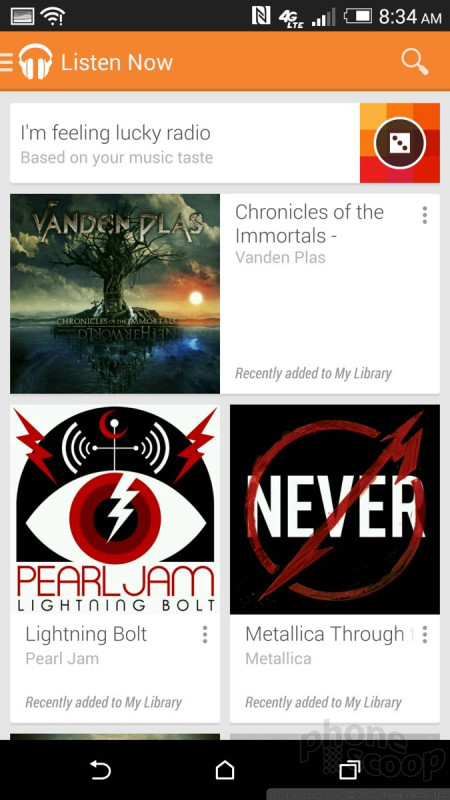





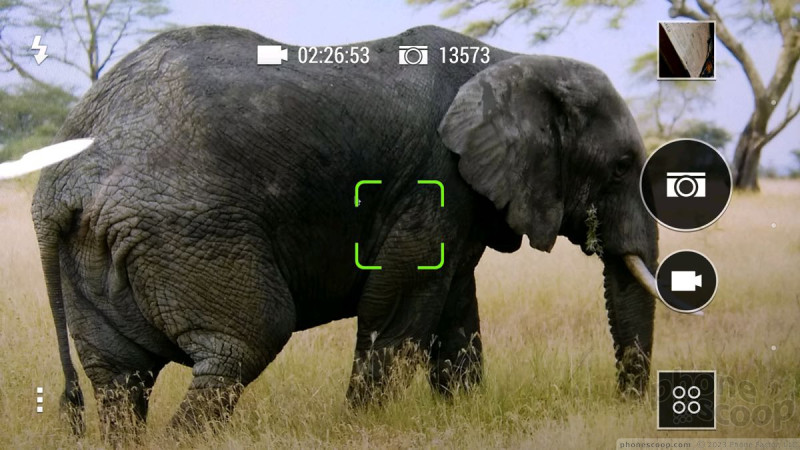





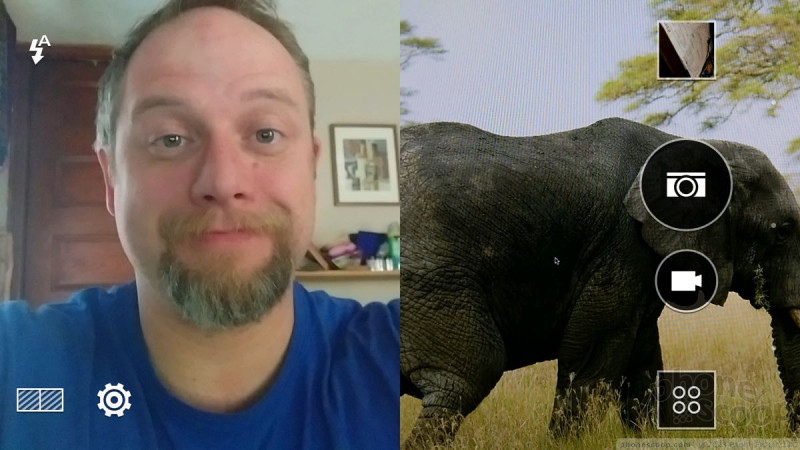



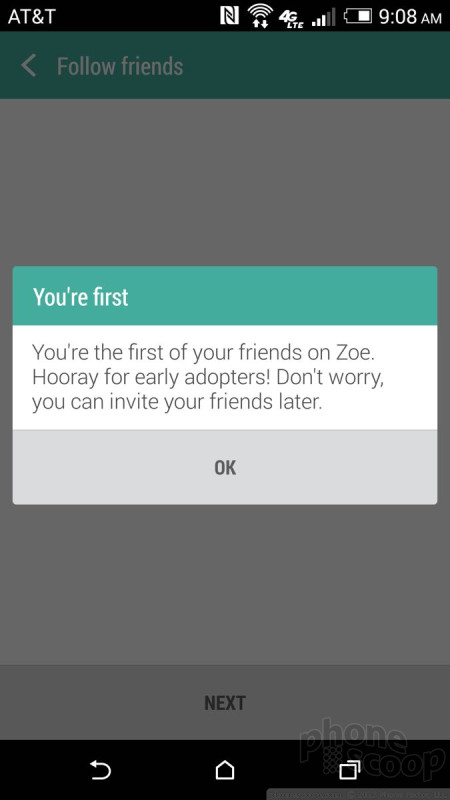























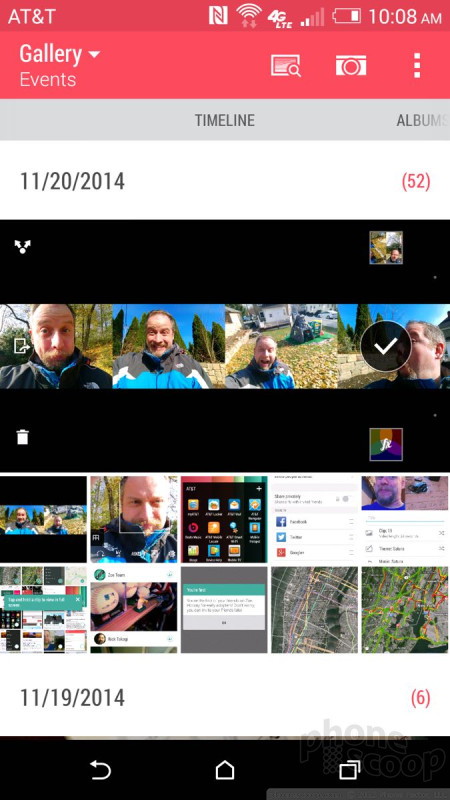






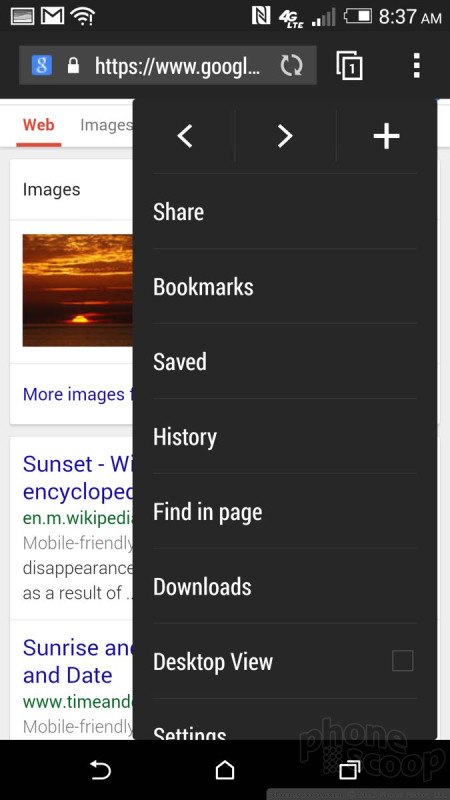




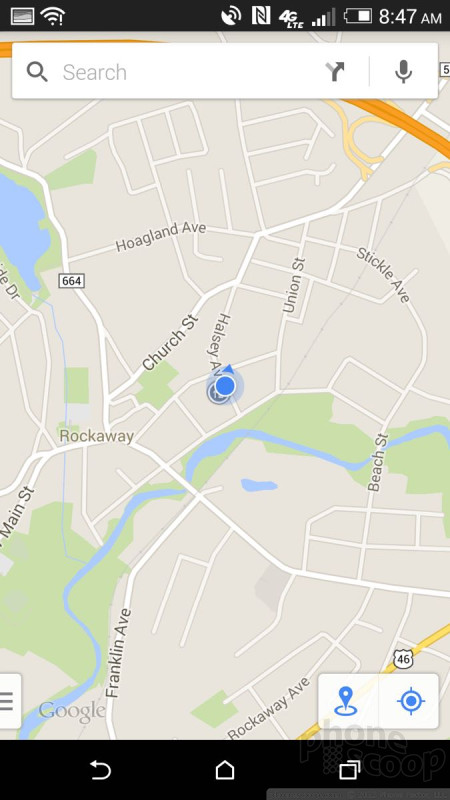




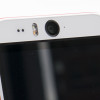 Hands On with the HTC Desire EYE
Hands On with the HTC Desire EYE
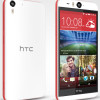 AT&T to Sell HTC Desire Eye and RE Camera Nov. 7
AT&T to Sell HTC Desire Eye and RE Camera Nov. 7
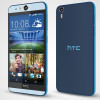 HTC Desire EYE is a High-End Selfie Phone
HTC Desire EYE is a High-End Selfie Phone
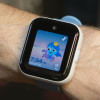 Hands On with the T-Mobile SyncUp Kids Watch
Hands On with the T-Mobile SyncUp Kids Watch
 Samsung Refreshes Galaxy S Series with S Pen, New Cameras
Samsung Refreshes Galaxy S Series with S Pen, New Cameras
 HTC Desire EYE
HTC Desire EYE




